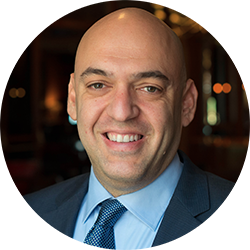Los Angeles, if you believe the statistics, has very few hate crimes.
In a city with a population of almost 4 million, the FBI reported that in 2010 fewer than 200 crimes constituted hate crimes. This figure is almost certainly low given that hate crimes are defined broadly. They include assault, battery, and intimidation, and cover a wide range of discrimination, including racial and ethnic bias. Does anyone really believe that in the entire city of LA there is less than one incident per day that meets the definition of a hate crime? The answer seems rather obvious—there are many more incidents in which people threaten each other and use a racial, ethnic, racial, or religious slur.
So what gives? Why are the cases so rare? Is there something unusual about the cases that make the list of official hate crimes?
The recent arrest of 7 teens in Palmdale answers these questions, and shows what is wrong with so much of the prosecution of hate crimes. As reported in the Huffington Post, 7 students ranging from ages 13 to 16, are charged with attacking a 15-year-old student who was walking home from school. When the facts are described in this way, the alleged crime seems fairly typical, doesn’t it?
But there are two factors that make this case stand out. One is that the teens who were arrested are black and the alleged victim is Hispanic. Oh–and one more thing—the attack was captured and broadcast on YouTube.
The video shows as many as 10 boys surrounding the victim and challenging him to a fight. The suspects then began hitting the teen while others watched. During the beating, the teens made racially derogatory statements that were captured on the video, Ford said. After the victim fell to the ground, the assailants kicked him multiple times in the head, knocked out several teeth and left shoe impressions on his skin, Ford said. The victim was able to get to his feet and escape the onslaught, and will need to undergo dental surgery.
There in a nutshell is what causes prosecutors to file hate crime charges—an explicit statement referring to the victim’s race, national origin, religion, or some other category that is covered by the law.
This is a perverse way to try to control or deter criminal behavior, especially among teenagers. Hate crime statutes provide for enhanced penalties for conduct that is often times incidental to the harm that criminal law is trying to prevent. If the teens arrested in Palmdale had been caught on tape trash talking the football team that the alleged victim rooted for, would their conduct have been any less serious? Whatever these teens did or did not do, and they are entitled to a presumption of innocence, it wasn’t more severe because of what some of them may have said during the incident. That, unfortunately, is not the law. What is said during the incident can matter a lot.
Thus, defending juveniles who have been accused of hate crimes often requires a great deal of digging. When groups of people are accused of working as a pack, their interactions are complex. Just because one person may have uttered an anti-racial statement doesn’t mean that they were motivated by racism. And it is even harder to know the motivations of other teens in the group. That is why it is critical, as the defense attorney, to challenge the evidence presented by the prosecutor and paint a more complete story of what may have happened.

